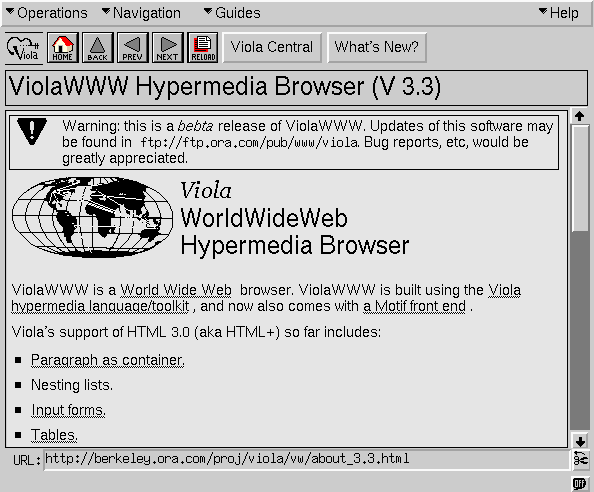Disruptive Cryptography: Post-Quantum & Machine Learning With Encrypted Data
Shay Gueron, Associate Professor of Mathematics, University of Haifa, Israel, and Raluca Ada Popa, Assistant Professor of Computer Science, UC Berkeley
Moderator: John Graham-Cumming, CTO, Cloudflare
 Photo by Cloudflare Staff
Photo by Cloudflare Staff
Raluca is also a Co-Director of the RISELab at UC Berkeley as well as Co-Founder and CTO of a cybersecurity startup called PreVeil. She developed practical systems that protect data confidentiality by computing over encrypted data as well as designed new encryption schemes that underlie these systems.
Shay was previously a Senior Principal Engineer, serving as Intel’s Senior Cryptographer and is now senior principal at AWS, and an expert in post-quantum, security, and algorithms.
JGC: Tell us about what you actually do.
RP: Computing on encrypted data is not just theoretical; it’s also exciting because you can keep data encrypted in the cloud. It covers hacking attacks while still enabling the functionality of the system. This is exciting because we can cover so many hacking attacks in one shot.
SG: I’m working on making new algorithms; also on making solutions for quantum computers that are increasingly strong.
SG: I’ve been working on cryptography: making it faster, recently I’ve been thinking about solutions for what will happen when we Continue reading
What Will AI Mean for Everyday Life?
Willie Tejada, Chief Developer Advocate, IBM and Anthony Goldbloom, CEO, Kaggle
Moderator: Jen Taylor, Head of Product, Cloudflare
 Photo by Cloudflare Staff
Photo by Cloudflare Staff
JT: Our focus today is really what does AI mean for everyday life. I’m hearing a lot about AI. What is your assessment about where we are and how it is making a difference?
WT: we’re in an unprecedented, interesting era. From a consumer perspective, negative connotation.
It’s an interesting era we are in; these technologies are going to do a tremendous amount in terms of consumers selecting what they buy, Helping patient-centric care.
Combination of data set & availability of resources is fueling AI.
You might hear 90% of the world’s data has been created in the past two years. AI will help us deal with that kind of information overload.
The big difference with programming systems is that AI knows how to understand, reason, learn, interact.
AG: There is a set of techniques through which we can more accurately predict fraud, insurance plans, credit scoring.
This is a jump in the past 15 years.
5 years ago, the ability to do very exciting things with unstructured data, i.e. automating radiology. Then digital networks Continue reading
The View from Washington: The State of Cybersecurity
Avril Haines, Former Deputy National Security Advisor, Obama Administration
Moderator: Doug Kramer, General Counsel, Cloudflare
 Photo by Cloudflare Staff
Photo by Cloudflare Staff
Avril began her career on the National Security Council, and went on to become the first female deputy at the CIA.
DK: How will cyber will play a role in military operations?
AH: We look at it from the perspective of “asymmetric threats”; state actors (those who have high-value assets that they can hold at risk with no threat to them). The US is more technologically advanced and relies on cyber more and more; we are as a consequence more vulnerable to cyber threats. Asymmetric threats thus hold at risk those things that are most important to us.
In the cyber realm we can’t quite define what constitutes a use of force, and saying so can be used against us. So this is an area that is crucial to continue working in; in many respects the US has the most to lose from using a framework that doesn’t work.
“The private sector is utterly critical in creating a framework that is going to work.”
We want to have widely-accepted norms and rules so that we can ask other countries Continue reading
Understanding the prevalence of web traffic interception


This is a guest post by Elie Bursztein who writes about security and anti-abuse research. It was first published on his blog and has been lightly edited.
This post summarizes how prevalent encrypted web traffic interception is and how it negatively affects online security according to a study published at NDSS 2017 authored by several researchers including the author of this post and Nick Sullivan of Cloudflare. We found that between 4% and 10% of the web’s encrypted traffic (HTTPS) is intercepted. Analyzing these intercepted connections further reveals that, while not always malicious, interception products most often weaken the encryption used to secure communication and puts users at risk.
This blog post presents a short summary of our study’s key findings by answering the following questions:
- How is encrypted web traffic intercepted? This section offers a short recap of how man-in-the-middle (MITM) interception is performed.
- How prevalent is HTTPS interception? This section explains how we measured the prevalence of HTTPS interception in the 8 billion connections we analyzed. Next, it summarizes the key trends observed when grouping these interceptions by OS (operating system), browser, and network.
- Who is intercepting secure web communication and why? This section provides an overview of Continue reading
Delivering Dot
Since March 30, 2017, Cloudflare has been providing DNS Anycast service as additional F-Root instances under contract with ISC (the F-Root operator).
F-Root is a single IPv4 address plus a single IPv6 address which both ISC and Cloudflare announce to the global Internet as a shared Anycast. This document reviews how F-Root has performed since that date in March 2017.
The DNS root servers are an important utility provided to all clients on the Internet for free - all F root instances including those hosted on the Cloudflare network are a free service provided by both ISC and Cloudflare for public benefit. Because every online request begins with a DNS lookup, and every DNS lookup requires the retrieval of information stored on the DNS root servers, the DNS root servers plays an invaluable role to the functioning of the internet.
At Cloudflare, we were excited to work with ISC to bring greater security, speed and new software diversity to the root server system. First, the root servers, because of their crucial role, are often the subject of large scale volumetric DDoS attacks, which Cloudflare specializes in mitigating (Cloudflare is currently mitigating two concurrently ongoing DDoS attacks as we write this). Continue reading
Hurricane Irma
Yesterday, we described how Hurricane Irma impacted several Caribbean islands, with the damage including a significant disruption to Internet access.
As Irma is now forecast to hit southern Florida as category 5 this weekend with gusty winds reaching up to 155mph, it is also expected that Internet infrastructure in the region will suffer.
At the time of writing, we haven’t noticed any decrease in traffic in the region of Miami despite calls to evacuate.

Resilient Data Centers
Contrary to popular belief, Internet wasn't built for the purpose of resisting a nuclear attack. That doesn't mean that datacenters aren't built to resist catastrophic events.
The Miami datacenter housing servers for Cloudflare and other Internet operators is classified as Tier IV. What does this tiering mean? As defined by the ANSI (American National Standards Institute), a Tier IV datacenter is the stringent classification in term of redundancy of the critical components of a datacenter: power and cooling. It guarantees 99.995% uptime per year, that is only 26 minutes of unavailability. Tier IV datacenters provide this level of uptime by being connected to separate power grids, allowing their customers to connect their devices to both of these grids. They Continue reading
The Story of Two Outages

Over the last two days, Cloudflare observed two events that had effects on global Internet traffic levels. Cloudflare handles approximately 10% of all Internet requests, so we have significant visibility into traffic from countries and networks across the world.
On Tuesday, September 5th, the government of Togo decided to restrict Internet access in the country following political protests. The government blocked social networks and rate-limited traffic, which had an impact on Cloudflare.

This adds Togo to the list of countries like Syria (twice), Iraq, Turkey, Libya, Tunisia, etc that have restricted or revoked Internet access.
The second event happened on Wednesday, September 6th, when a category 5 hurricane ravaged the Caribbean Islands.
The affected countries at the moment are:
- Anguilla
- Antigua and Barbuda
- British Virgin Islands
- Puerto Rico
- Saint Barthelemy
- Saint Kitts and Nevis
- Saint Martin
- Sint Maarten
- U.S. Virgin Islands
Losing the routes
Most of the network cables are buried underground or laying at the bottom of the oceans but the hardware which relies on electricity is the first one to go down.
Cell towers sometime have their own power source thus allowing local phone calls but without a backbone no outside Continue reading
SIDH in Go for quantum-resistant TLS 1.3
The Quantum Threat

Most of today's cryptography is designed to be secure against an adversary with enormous amounts of computational power. This means estimating how much work certain computations (such as factoring a number, or finding a discrete logarithm) require, and choosing cryptographic parameters based on our best estimate of how much work would be required to break the system.
If it were possible to build a large-scale quantum computer, many of the problems whose difficulty we rely on for security would no longer be difficult to solve. While it remains unknown whether large-scale quantum computers are possible (see this article for a good overview), it's a sufficient risk that there's wide interest in developing quantum-resistant (or post-quantum) cryptography: cryptography that works on ordinary computers we have today, but which is secure against a possible quantum computer.
At Cloudflare, our biggest use of cryptography is TLS, which we use both for serving our customers' websites (all Cloudflare sites get free HTTPS), as well as for internal inter-datacenter communication on our backend.
In the TLS context, we want to create a secure connection between a client and a server. There are basically three cryptographic problems here:
Authenticity: the server Continue reading
Portland (Oregon): Cloudflare’s 117th Data Center!

Even as the luckiest amongst us across the US West Coast dashed off to Oregon to be closer to the solar eclipse path of totality, Cloudflare engineers were busy turning up our newest data center in Portland.
This deployment serves as our 27th data center in North America alone, and our 117th globally. It also provides additional redundancy to our Seattle and San Jose data centers, while increasing our capacity to run services and fight growing attacks.
Special History
The Silicon Forest corridor around Portland holds a special place in the hearts of the Cloudflare team. It is both new (by way of our latest edge deployment bringing us closer to millions of Oregon Internet users), and familiar (since we have had an internal data center in this region for many years, enabling services such as analytics and enterprise logs).
The greater Portland area has played a pivotal area in building high-technology products from companies such as Tektronix (test and measurement equipment), Mentor Graphics (electronic design automation) and Intel (with nearly 20,000 employees across Oregon).
Expanding the edge
At our Portland data center, we locally interconnect with ISPs such as Comcast (into their regional area networks such as Beaverton and Continue reading
One way to help Hurricane Harvey victims
Photo Credit: Texas Military Department (Flickr)
Hurricane Harvey hit Texas last Friday as a Category 4 storm. Although Harvey's category was quickly downgraded, the storm lingered around for days, bringing 50 inches of rain to the greater Houston area.
As someone who was born in Houston, it's hard to see my former city hit with such destruction, and to know that many of my friends and fellow Houstonians are in need of help and assistance. Many families have had their entire house flooded out by the storm. Displaced residents are in a state of stagnation and are seeing their supplies diminishing by the day.
The Hurricane Relief app will allow visitors to your site to donate to one of the charities helping those impacted in Houston:
The Hurricane Relief App takes two clicks to install and requires no code change. The charities listed are recommended by NPR.
If you wanted to add your own custom list of charities for disaster relief or other causes, feel free to fork the source of this app and make your own.
The WireX Botnet: How Industry Collaboration Disrupted a DDoS Attack
Introduction
On August 17th, 2017, multiple Content Delivery Networks (CDNs) and content providers were subject to significant attacks from a botnet dubbed WireX. The botnet is named for an anagram for one of the delimiter strings in its command and control protocol. The WireX botnet comprises primarily Android devices running malicious applications and is designed to create DDoS traffic. The botnet is sometimes associated with ransom notes to targets.
A few days ago, Google was alerted that this malware was available on its Play Store. Shortly following the notification, Google removed hundreds of affected applications and started the process to remove the applications from all devices.
Researchers from Akamai, Cloudflare, Flashpoint, Google, Oracle Dyn, RiskIQ, Team Cymru, and other organizations cooperated to combat this botnet. Evidence indicates that the botnet may have been active as early as August 2nd, but it was the attacks on August 17th that drew the attention of these organizations. This post represents the combined knowledge and efforts of the researchers working to share information about a botnet in the best interest of the internet community as a whole. This blog post was written together by researchers from numerous organizations and released Continue reading
Going Global – a Localization Case Study at Cloudflare
Today Cloudflare serves nearly 10% of all global internet requests and more than 80% of our customers are based outside of the United States. Cloudflare is rapidly growing and there is nothing more important to us than being able to better serve our users across the world beyond our global offices in San Francisco, Austin, Champaign, Washington D.C., New York, London, and Singapore.
Earlier this year, we launched a team to focus on global expansion and growth. In June, we presented our agile global market expansion experiment framework at LocWorld Barcelona and wanted to report back on how things were going.
Getting started
"If you talk to a man in a language he understands, that goes to his head. If you talk to him in his language, that goes to his heart" – Nelson Mandela
At Cloudflare, we are motivated by our users from all around the world. Of our top 15 countries by traffic volume, 10 have official languages other than English. As a large part of our users do not speak our primary language of business, our priority is to reach and engage with these users in their native languages through localization.

As a growing company, Continue reading
Advancing Privacy Protection with the GDPR
A game-changer
The road towards implementation of the new European GDPR (the General Data Protection Regulation) has been a long one, even though public awareness of its impact, especially outside of Europe, is only now really starting to take hold. This game-changing piece of EU legislation will require companies to fundamentally change how they process and use personal data (broadly defined) they receive from EU citizens, including through consent and data handling agreements with their customers, supply chains, and vendors. It will come into effect on 25th May, 2018, and will have tremendous reach, touching on all business sectors. More than that, the GDPR has extra-territorial scope and will apply to any business that processes the personal data of European users, irrespective of whether that business has any physical presence in the European Union.
The aim of the GDPR, which will replace the currently applicable European Data Protection Directive of 1995, is to both meet the challenges of globalization and address dynamic new products and services, while also trying to create a future-proof framework that will comfortably accommodate emerging technologies and scenarios, including the Internet of Things. It is also a response to Europeans’ growing concerns over the control and Continue reading
App Highlight: Hardenize
Hardenize is a comprehensive security tool that continuously monitors the security and configuration of your domain name, email, and website. Ivan Ristić, the author of Hardenize, gave a demo of his app at our Cloudflare London HQ.
Do you know how secure your site is? View a Hardenize report on your website by clicking this button:

Interested in sharing a demo of your app at a meetup? We can help coordinate. Drop a line to [email protected].
Broken packets: IP fragmentation is flawed
As opposed to the public telephone network, the internet has a Packet Switched design. But just how big can these packets be?
 CC BY 2.0 image by ajmexico, inspired by
CC BY 2.0 image by ajmexico, inspired by
This is an old question and the IPv4 RFCs answer it pretty clearly. The idea was to split the problem into two separate concerns:
What is the maximum packet size that can be handled by operating systems on both ends?
What is the maximum permitted datagram size that can be safely pushed through the physical connections between the hosts?
When a packet is too big for a physical link, an intermediate router might chop it into multiple smaller datagrams in order to make it fit. This process is called "forward" IP fragmentation and the smaller datagrams are called IP fragments1.
 Image by Geoff Huston, reproduced with permission
Image by Geoff Huston, reproduced with permission
The IPv4 specification defines the minimal requirements. From the RFC791:
Every internet destination must be able to receive a datagram
of 576 octets either in one piece or in fragments to
be reassembled. [...]
Every internet module must be able to forward a datagram of 68
octets without further fragmentation. [...]
The first value - Continue reading
Why We Terminated Daily Stormer
Earlier today, Cloudflare terminated the account of the Daily Stormer. We've stopped proxying their traffic and stopped answering DNS requests for their sites. We've taken measures to ensure that they cannot sign up for Cloudflare's services ever again.
Our terms of service reserve the right for us to terminate users of our network at our sole discretion. The tipping point for us making this decision was that the team behind Daily Stormer made the claim that we were secretly supporters of their ideology.
Our team has been thorough and have had thoughtful discussions for years about what the right policy was on censoring. Like a lot of people, we’ve felt angry at these hateful people for a long time but we have followed the law and remained content neutral as a network. We could not remain neutral after these claims of secret support by Cloudflare.
Now, having made that decision, let me explain why it's so dangerous.
Where Do You Regulate Content on the Internet?
There are a number of different organizations that work in concert to bring you the Internet. They include:
- Content creators, who author the actual content online.
- Platforms (e.g., Facebook, Wordpress, etc.), where Continue reading
Power outage hits the island of Taiwan. Here’s what we learned.

At approximately 4:50pm local time (8:50am UTC) August 15, a major unexpected power outage hit the island of Taiwan with a significant amount of its power generation facilities going down.
Blackout!
Most of the island was hit with power outages, shortages and rolling blackouts, with street lights not functioning, nor power in many of Taipei’s shopping malls, and much other infrastructure.
Blackouts of this scale are very rare. Usually, during an outage of this scale, it would be expected that Internet traffic would greatly drop, as houses and businesses lose power and are unable to connect to the Internet. I’ve experienced this in the past, working at consumer ISPs. As households and businesses lose power, so do their modems or routers which connect them to the Internet.
However, during yesterday's outage, something different happened. I'd like to share some insights from yesterday's outage.
 Photo: Taipei 101 Dark during the Blackout -
Photo: Taipei 101 Dark during the Blackout -
Source: David Chang/EPA
Even when the power is out, the Internet still operates
Most Telecom and Data Center facilities are built with redundancy in mind and have backup power generation. Our Data Center partner, Chief, was able to switch to backup power generation without any service interruption, allowing Continue reading
Recap: How to make a Cloudflare App workshop in Austin
Cloudflare hosted a developer preview workshop in Austin for Cloudflare Apps, taught by Zack Bloom, tech lead of Cloudflare Apps. Due to popular request, we are making available the video from the workshop.
Want some ideas on what to start with? Check out the idea suggestion list on our Cloudflare Community page. It's a great idea to review our Apps documentation available here.
Want to request a Cloudflare Apps workshop in your city? Please drop a line to [email protected]
Share your works in progress and compare notes with other developers on the community forum.
Moving Forward with Path Forward

In February, I blogged about our first rotation of Path Forward returnships and the awesome people we’ve hired as a result of the program. As a refresher, Path Forward is a nonprofit organization that aims to empower people who’ve taken time away from their careers to focus on caregiving to return to the workforce.
Cloudflare started partnering with Path Forward this past year as a way to expand our talent pool to include the best and the brightest, regardless of any gaps in their career journeys. We truly believe in a diverse group of employees, and that includes those who can bring different perspectives from their time away from the workforce.
We’ve been lucky to have three amazing candidates go through the Path Forward program this time around across our People & Places, Solutions Engineering, and Marketing teams.
 Christine Winston (director of partnerships, Path Forward), Me, and Tami Forman (executive director, Path Forward)
Christine Winston (director of partnerships, Path Forward), Me, and Tami Forman (executive director, Path Forward)
The Cloudflare Path Forward Experience
Gigi Chiu did a returnship with the Solutions Engineering team here at Cloudflare after taking some time off to raise her children. Before taking time off, she worked at Motorola and previously worked for a telco in Canada that was helping to Continue reading
The Languages Which Almost Became CSS

This was adapted from a post which originally appeared on the Eager blog. Eager has now become the new Cloudflare Apps.
In fact, it has been a constant source of delight for me over the past year to get to continually tell hordes (literally) of people who want to – strap yourselves in, here it comes – control what their documents look like in ways that would be trivial in TeX, Microsoft Word, and every other common text processing environment: “Sorry, you’re screwed.”
— Marc Andreessen
1994
When Tim Berners-Lee announced HTML in 1991 there was no method of styling pages. How a given HTML tag was rendered was determined by the browser, often with significant input from the user’s preferences. To Continue reading
 Source: accuweather.com
Source: accuweather.com


